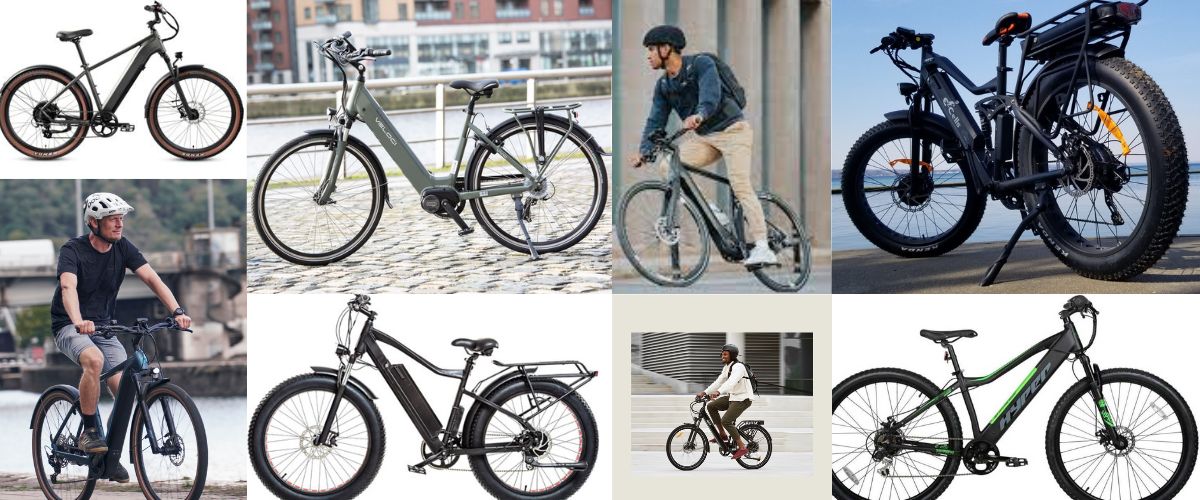
Updated on August 1, 2024
Electric bikes, or e-bikes, have surged in popularity over the past few years. They offer a blend of traditional cycling and electric power, making commuting, recreational riding, and even tackling challenging terrains more accessible and enjoyable. If you’re considering purchasing an electric bike, understanding the costs involved is essential. Here’s a detailed guide to help you navigate the pricing landscape of e-bikes.
Price Range of Electric Bikes
The cost of electric bikes can vary significantly based on various factors, including brand, type, features, and quality. Here’s a general breakdown:
Entry-Level Electric Bikes ($500 – $1,500):
- Who They’re For: Ideal for beginners, casual riders, or those on a tight budget.
- Features: Basic motor and battery systems, limited range, and fewer additional features.
- Examples: Commuter bikes for city use, foldable e-bikes for easy storage.
Mid-Range Electric Bikes ($1,500 – $3,000):
- Who They’re For: Great for regular riders, commuters, and those looking for better performance.
- Features: Improved motors and batteries, better range (up to 50 miles), more robust construction, and additional features like suspension and advanced braking systems.
- Examples: Hybrid bikes, city bikes with enhanced comfort and performance.
High-End Electric Bikes ($3,000 – $6,000+):
- Who They’re For: Enthusiasts, daily commuters, or those needing specialized e-bikes for specific activities.
- Features: High-quality components, long-range batteries (over 60 miles), powerful motors, advanced features such as smart connectivity, superior suspension systems, and lightweight frames.
- Examples: Mountain bikes, high-performance road bikes, cargo bikes for heavy loads.
Factors Affecting the Price of Electric Bikes
Several factors influence the cost of an electric bike:
Motor and Battery:
- The motor’s power (measured in watts) and the battery’s capacity (measured in watt-hours) are significant cost determinants. More powerful motors and larger batteries provide better performance and longer range but come at a higher price.
Frame and Materials:
- The frame material (aluminum, carbon fiber, steel) affects the bike’s weight, durability, and cost. High-end models often use lightweight materials like carbon fiber.
Brand and Quality:
- Established brands with a reputation for quality and reliability often price their bikes higher. These bikes usually come with better warranties and customer support.
Additional Features:
- Features such as integrated lights, advanced display screens, suspension systems, and smart connectivity options can increase the price.
Tips for Buying an Electric Bike
Define Your Needs:
- Consider what you’ll use the e-bike for: commuting, leisure, off-road biking, or heavy-duty tasks. This will help you choose the right type and features.
Test Ride Before You Buy:
- Always test ride an e-bike before purchasing. It helps you assess comfort, performance, and fit.
Check Battery Life and Charging Time:
- Ensure the battery offers sufficient range for your needs and check the charging time. Some batteries are removable, making charging more convenient.
Consider After-Sales Service:
- Look for brands or retailers that offer good after-sales service, including warranty, maintenance, and repair services.
Read Reviews:
- Customer reviews and expert opinions can provide valuable insights into the bike’s performance and reliability.
Final Thoughts
Electric bikes offer a fantastic way to enhance your cycling experience, whether for commuting, exercise, or adventure. While the initial cost can be higher than traditional bikes, the benefits and convenience often justify the investment. By understanding the price range and factors affecting the cost, you can make an informed decision and find an e-bike that suits your needs and budget.






